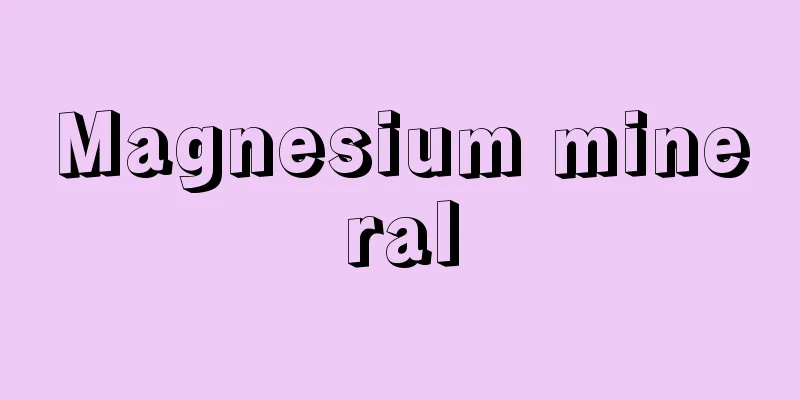Shanghai

|
It is the largest city in China, located in the eastern part of the country. Administratively, it is a direct-controlled municipality of the government with the same rank as a province, along with Beijing, Tianjin, and Chongqing. It has an area of 6,340 square kilometers. Its population is 13,216,324, and its city-controlled district population is 11,368,237 (as of 2000). It is made up of 16 city-controlled districts, including Huangpu District, and 3 counties, including Chongming County. [Funakoshi Akio] NatureLocated on the delta at the mouth of the Yangtze River, it faces the Yellow Sea and the East China Sea to the east, Zhejiang Province to the southwest, and Jiangsu Province to the north and west. The city's central area is near the confluence of the Huangpu River and the Suzhou River, and the network of waterways that run crisscrossing these two rivers are the main drainage channels for Lake Tai to the west, and are used for water transportation. The city has a warm and humid climate with four distinct seasons, with an average annual temperature of 16.1°C and an average annual precipitation of 1,135 mm. Approximately 53% of the annual precipitation falls in the four months from June to September. [Funakoshi Akio] industryShanghai is a large industrial city with the Yangtze River basin as its hinterland, and is the center of China's coastal shipping routes, with a large trading port that also connects to foreign shipping routes. The port of Shanghai, which is mainly located on the west bank of the Huangpu River, can accommodate ships of up to 30,000 tons. After the port was opened by the Treaty of Nanking in 1842, Shanghai became an important base for the imperialist powers' invasion of China. Under the control of comprador, bureaucrats, and landowner capital who were in league with foreign capital, trading companies and factories were built with the aim of plundering China's resources, and colonial urbanization proceeded. Before liberation, Shanghai was already China's largest commercial and industrial city, but the proportion of commerce was far greater than that of industry, and industry was dominated by light industry, centered on spinning, and full-scale and comprehensive industrial development was not seen. Furthermore, industrial investment was overwhelmingly made up of foreign capital and bureaucratic capital, and trade was of a colonial nature, with raw materials being exported and finished products being imported. Since the establishment of the People's Republic of China, Shanghai has become a major industrial base, producing high-quality products in various sectors, including machinery, shipbuilding, chemicals, spinning, and printing, with steel as its core industry. In recent years, almost all production and consumer goods, including electronic computers, electron microscopes, machine tools, large generators, plastic products, and nitrogenous fertilizers, have been produced in the city. All of the steel materials that form the basis of industry can be produced within the city, and the Baoshan Steel Works, built in the Baoshan District, began full operation in 1985, enhancing and strengthening not only Shanghai's but China's industry as a whole. In addition, many industrial parks of various kinds have been built in the suburbs, and housing complexes have also been created for the workers who work there. In particular, large-scale development has been carried out in the Pudong New Area since 1990, with the 88-story Jin Mao Tower and the 468-meter-tall TV tower being built. The suburbs of Shanghai are an extremely productive agricultural region with well-developed irrigation and drainage systems, where in addition to rice, vegetables, cotton, and fruit are produced, dairy farming, freshwater fish farming, etc. Food production per agricultural population and per unit area is the highest in the country. Rail transport to other parts of China became more convenient after the completion of the Nanjing Bridge in 1968, and direct trains became available to connect the city to the whole of North China. In addition to the Beijing-Shanghai Railway, the city can also travel to South China via the Shanghai-Hangzhou Railway (Shanghai-Hangzhou) and the Zhejiang-Gan Railway (Hangzhou-Zhuzhou), and then the Beijing-Guangzhou Railway to Guangzhou and other parts of China. The Song-Shu Railway, which connects the city center to Wusong at the mouth of the Huangpu River, was China's first railway, built in 1876 when the outer port of Wusong was opened, before the port of Shanghai was opened. In addition, the city has two subway lines and one monorail line. There are also two airports, Pudong International Airport and Hongqiao Airport. [Funakoshi Akio] cultureSince the Ming and Qing dynasties, the area downstream of the Yangtze River has been a culturally advanced region where academies and schools were actively established, and has produced many outstanding intellectuals. Even today, Shanghai is home to over 40 higher education institutions, including Fudan University, Shanghai Jiao Tong University, Tongji University, and East China Normal University, as well as numerous research institutes. In addition, facilities such as museums, cultural palaces, and sports centers, as well as parks and green spaces, are being developed, and the new town areas on the outskirts are being given a new look. In addition to famous places and historical sites such as Jing'an Temple, Longhua Temple, Jade Buddha Temple, Baiyun Temple, and City God Temple, there are traditional cultural heritage sites and monuments to each stage of China's modernization, such as the Lu Xun Memorial Hall, the May 30 Martyrs' Tomb, and the Tomb of Xu Guangqi. [Funakoshi Akio] historyIn the 11th century, Shanghai Town was established, followed by the Shiboushi, a trade supervision agency, and it became one of the bases for transporting rice from Jiangnan to the north via the Grand Canal. In addition to salt production and fishing, cotton cultivation, which was introduced from the south, began. At the end of the 13th century, it was promoted to a prefecture and served as the port of Songjiang Prefecture. In 1553, a prefecture castle was built to defend against pirates such as wako. In 1685 during the Qing Dynasty, Jiangnan Pass was established to facilitate trade with foreign countries. Britain and other countries sought to open the port, but were unsuccessful, and in 1832, Lindsay of the British East India Company arrived again to seek opening, but was refused. Furthermore, Britain planned to open five ports before the outbreak of the Opium Wars, and specified the lower reaches of the Yangtze River or Shanghai as the northernmost port, which was opened in the Treaty of Nanking as a result of the Opium Wars. In 1843, the first British consul, Balfour, established a consulate in the county town, and in 1845, a land agreement was concluded with Daotai, a local official in Shanghai, and the northern part of the county town was designated as a foreign settlement (concession). From around 1848, many traders gathered here, and it became a trading port, especially for the opium trade. After 1854, the concession was expanded, and in 1863, the British and American international concession was formed. Including the French concession, it reached a maximum area of about 25 square kilometers. Authority over the concession was vested in the Works Bureau, which was established by the residents. After the Sino-Japanese War, light industry developed with the influx of foreign capital, and domestic capital also flocked to the city, making it China's industrial base. It was also a hotbed of revolutionary movements. In 1921, the Chinese Communist Party was founded here. In 1925, the anti-imperialist movement of May 30th (the May 30th Incident) took place, and in 1932 and 1937, there were two Shanghai incidents between China and Japan, and in 1943, a Japanese puppet government was established. After the war, it became the center of student and labor movements, and was liberated by the People's Liberation Army in May 1949. After liberation, it became the center of Chinese industry, and agriculture in the suburbs also developed, and since the 1970s, it has been responsible for about 15% of the country's gross national product, despite being about 1% of the country's population. [Yuzo Kato] "Shanghai, by Kato Yuzo" (included in "Urban Stories," 1982, Yomiuri Shimbun)" ▽ "The World Before and After the Black Ships, by Kato Yuzo (1985, Iwanami Shoten)" ▽ "Shanghai: Openness and Publicness, by Nebashi Shoichi (1999, Ryukoku University Press)" ▽ "Shanghai: A Resurrected World City, by Tajima Junko (2000, Jiji Press)" [References] | | | | | | | | | | | | |A famous temple built in 1882. It houses two jade Buddha statues, which gave the temple its name. China Shanghai ©Shogakukan "> Jade Buddha Temple A 468m-tall TV tower in the Pudong New Area. It is adjacent to the Shanghai Urban History and Development Exhibition Hall. China Shanghai ©Shogakukan "> Oriental Pearl Tower Source: Shogakukan Encyclopedia Nipponica About Encyclopedia Nipponica Information | Legend |
|
中国、華東地区にある同国最大の都市。行政上は、北京(ペキン)、天津(てんしん/ティエンチン)、重慶(じゅうけい/チョンチン)とともに省と同格の政府直轄市である。面積6340平方キロメートル。人口1321万6324、市轄区人口1136万8237(2000)。黄浦(こうほ)区ほか16市轄区と、崇明県ほか3県からなる。 [船越昭生] 自然揚子江(ようすこう/ヤンツーチヤン)河口デルタ上に位置し、東は黄海および東シナ海に臨み、南西は浙江(せっこう/チョーチヤン)省、北と西で江蘇(こうそ/チヤンスー)省に接する。黄浦江(こうほこう/ホワンプーチヤン)と蘇州河(そしゅうが/スーチョウホー)の合流点付近が市の中心地域で、両河川と縦横に走る水路網は西方にある太湖(たいこ/タイフー)の主要な排水路となるとともに、水上交通に利用される。年平均気温16.1℃、年降水量1135ミリメートル、温暖湿潤で四季がはっきりしている。6~9月の4か月間に年降水量の約53%の降雨がある。 [船越昭生] 産業揚子江流域一帯を後背地とする大産業都市で、中国沿海航路の中心をなし、外国航路とも連絡する大貿易港をもつ。おもに黄浦江西岸に広がる上海港は3万トン級の船舶の入港も可能である。上海は、1842年の南京(ナンキン)条約による開港以後、帝国主義列強の中国侵略の重要拠点となった。外国資本と手を結ぶ買弁・官僚・地主資本の支配下に、中国の資源の収奪を目ざす商社や工場が建設されて植民地的な大都市化が進められた。解放前、上海はすでに中国最大の商工業都市であったが、工業に比べ商業の比重がはるかに大きく、しかも工業は紡績業を中心とする軽工業が多く、本格的かつ総合的な工業の発展はみられなかった。さらに工業投資は外国資本と官僚資本が圧倒的な比重を占め、貿易も原料輸出、製品輸入という植民地的性格のものであった。 新中国になってから、上海は中国の有力な工業基地となり、鉄鋼業を基幹工業として各種機械、造船、化学、紡績、印刷などの各部門にわたって高水準の製品を生産するようになった。さらに近年は電子計算機、電子顕微鏡、工作機械、大型発電機、プラスチック製品、窒素肥料など、生産財、消費財のほとんどすべてにわたる生産が行われている。また工業の基礎となっている鋼材はすべて市内で生産することができ、宝山区に建設された宝山製鉄所が完全に操業を開始し(1985)、上海のみならず中国の工業全体が充実、強化された。そのほか近郊には各種の工業団地が数多く建設され、ここで働く労働者の住宅団地もつくられている。とくに浦東新区においては1990年以降大規模な開発が行われ、地上88階のビル金茂大厦(きんもたいか)や高さ468メートルのテレビ塔がある。 上海近郊は、灌漑(かんがい)、排水設備の整備された生産力のきわめて高い農業地帯で、米のほか野菜、綿花、果樹の生産や酪農、淡水魚の養殖などが行われる。農業人口1人当りおよび単位面積当りの食糧生産は全国一である。 鉄道交通による中国各地との連絡は1968年の南京大橋の完成以後便利となり、華北一帯と直通列車で連絡が可能となった。すなわち京滬(けいこ)鉄道で北京に通じるほか、華南方面へは滬杭(ここう)鉄道(上海―杭州(こうしゅう/ハンチョウ))、浙贛(せっかん)鉄道(杭州―株州(しゅしゅう/チューチョウ))経由で京広(けいこう)鉄道によって広州ほかの各地と連絡する。市の中心部と黄浦江口の呉淞(ごしょう/ウーソン)を結ぶ淞滬(しょうこ)鉄道は、上海の開港以前の1876年、外港呉淞の開港に際して建設された中国最初の鉄道である。そのほか、市内に地下鉄が2路線、モノレールが1路線ある。また、浦東(ほとう/プートン)国際空港と虹橋(こうきょう/ホンチャオ)空港の二つの空港がある。 [船越昭生] 文化もともと揚子江下流地域は明(みん)・清(しん)代以来、書院や学社の結成の盛んな文化的先進地帯で、多くの優れた文化人を輩出した。今日でも上海には、復旦(ふくたん)大学、上海交通大学、同済(どうせい)大学、華東師範大学をはじめ40を超える高等教育機関や数多くの研究機関がある。また博物館、文化宮、体育場などの施設や公園、緑地などの整備が進み、郊外のニュータウン地帯も面目を一新しつつある。名所・旧跡では、静安寺、竜華寺、玉仏寺、白雲観、城隍廟(じょうこうびょう)などのほか、魯迅(ろじん)記念館、五・三〇烈士墓、徐光啓(じょこうけい)墓など、伝統文化遺産と中国近代化の各段階における記念物がある。 [船越昭生] 歴史11世紀、上海鎮、ついで貿易監督庁の市舶司が設置されて、江南の米を大運河で北へ運ぶ基地の一つとなった。製塩業、漁業のほか、南から伝わった綿花栽培を開始した。13世紀末に県に昇格、松江府の港の役割を果たし、1553年に倭寇(わこう)など海賊の防御に県城を築いた。清朝の1685年、外国との貿易に伴い江南関を設置。イギリスなどが開港を求めたが成功せず、1832年、ふたたびイギリス東インド会社のリンゼーが開港を求めて来航、拒否された。さらにイギリスはアヘン戦争の開戦前に5港の開港を計画、揚子江の下流域または上海を最北の港として特定し、アヘン戦争の結果の南京条約で開港させた。 1843年、初代のイギリス領事バルフォアが県城に領事館を置き、45年上海の地方官である道台と土地章程を結び、県城の北側を外国人居留地(租界)と決めた。48年ごろから貿易商が多く集まり、とくにアヘン貿易を中心とする貿易港となった。54年以後、租界の拡張を行い、63年にはイギリス、アメリカの共同租界を形成。フランス租界をあわせて、最大時には約25平方キロメートルに上った。租界の権限は居留民のつくった工部局にあった。 日清戦争後、外国資本の進出で軽工業が発達、民族資本も集まって中国の工業基地となった。また革命運動の温床でもあった。1921年、中国共産党が当地で誕生。25年に5月30日の反帝国主義運動(五・三〇事件)、32年、37年に日本との間に2回の上海事変がおこり、43年、日本の傀儡(かいらい)政権が成立。戦後は学生・労働運動の中心となり、49年5月人民解放軍によって解放された。解放後は中国工業の中心で郊外区の農業も発達、1970年代からは、全国人口の約1%で国民総生産の約15%を担っている。 [加藤祐三] 『加藤祐三「上海」(『都市物語』所収・1982・読売新聞社)』▽『加藤祐三著『黒船前後の世界』(1985・岩波書店)』▽『根橋正一著『上海――開放性と公共性』(1999・流通経済大学出版会)』▽『田嶋淳子著『上海 甦る世界都市』(2000・時事通信社)』 [参照項目] | | | | | | | | | | | | |1882年に建立された名刹。寺名の由来ともなった2体の玉仏坐像が安置されている。中国 上海©Shogakukan"> 玉仏寺 浦東新区に建つ高さ468mのテレビ塔。上海城市歴史発展陳列館が併設されている。中国 上海©Shogakukan"> 東方明珠電視塔 出典 小学館 日本大百科全書(ニッポニカ)日本大百科全書(ニッポニカ)について 情報 | 凡例 |
>>: Jumper - Jumper (English spelling)
Recommend
Hakugan Kusaka
…Bito Nishu, one of the three scholars of the Kan...
homozygote
…the traits expressed on the surface of the zygot...
curator
...On the other hand, many museums allocate a lar...
Odonata
…A general term for insects belonging to the orde...
Paschen, LCHF (English spelling) PaschenLCHF
...The phenomenon in the Zeeman effect of atomic ...
Kokufu [town] - Kokufu
An old town in Iwami County, occupying the Fukuro ...
Nakaji Yasui - Nakaji Yasui
Photographer. Born in Osaka City. A representativ...
Moltke, H. von (English spelling)
…A.G. von Schlieffen, who served as Chief of the ...
Revolt - Ikki
The bond and behavioral pattern between warriors ...
Hymenopodidae
…They are highly predatory even from the time the...
Water Droplets - Lovely
〘noun〙① A trickle of water. A drop of water. ※Elem...
Cliff-cave tombs
…In addition, there are hanging tombs (a burial c...
Masaaki Kaneko
…But at the 18th Tokyo tournament (1964), Yoshika...
Mine warfare - Kiraisen
…In the Imperial Japanese Navy, a special unit wa...
Misunderstanding - mistake
...A single criminal law that cracked down on min...









